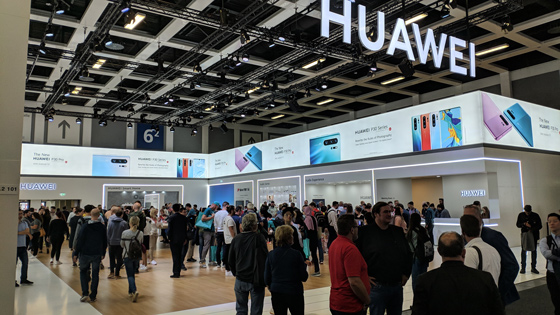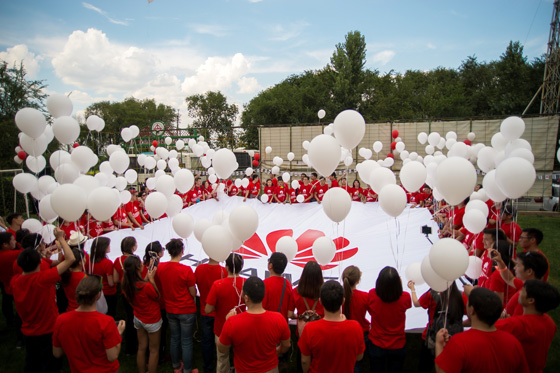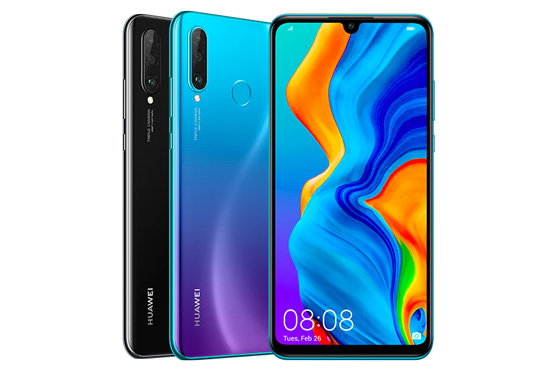
 |
Huawei and 2020 “New Edition” strategy
Fabio Angeloni - 28 Maggio 2020
|
|
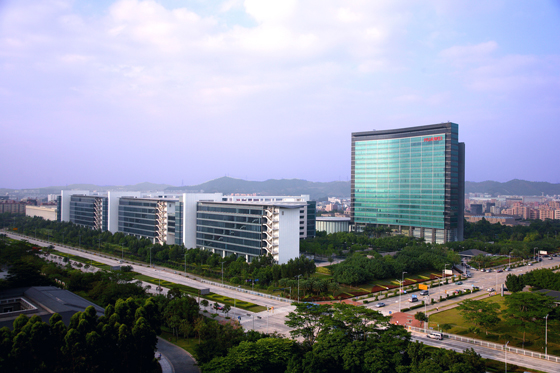
Headquarter
- click to enlarge -
Introduction
There is little to add to what we already know about the colossus Huawei. In just 33 years, the famous red petals brand has become a global giant that has firmly grabbed the second place on the global smartphone market, just behind Samsung, making its way into the sector thanks to the quality of well engineered products, embellished with a photographic section supervised by Leica. To better understand the picture of the marketing of these "new edition" smartphones, however, a brief résumé may be appropriate.
What is happening in the TLC sector?
One could usefully make interesting geopolitical elucubrations on what has been happening for some time now in the fixed and mobile telecommunications sector, which could be based on the recent tests of internal network disconnection from the global internet successfully completed by the Russian and Chinese governments. But this is certainly not the place to discuss this matter. However, it cannot be overlooked that the birth and development of operating systems for smartphones other than the only two existing (American) ones, rather than being considered a damage of some importance to the ban, can be interpreted as an attempt to guarantee total telecommunication self-sufficiency to the area.
Assuming for a moment that the development of the Chinese HarmonyOS (formerly HongMeng OS) and of the Russian Aurora may obey this design (also considering the fact that, according to the Omdia report, in the second half of 2019 Huawei became the leading manufacturer of mobile phone terminals also in Russia, as well as at home, as it is well known), it should be carefully considered the hypothesis that in the not too distant future these operating systems for smartphones might be offered free of charge to other important players in the area which perhaps suffer from the supremacy of the two recognized leaders of the sector, i.e. the American Apple Inc. (third player in the global industry, but first globally recognized brand in 2018, according to Interbrand), with its proprietor iOS never sold to third parties; and Google LLC. (second globally recognized brand in 2018, according to Interbrand), with its Android operating system that, before this event, governed all the remaining smartphones of recent generations produced on the planet (that is a percentage of just under two thirds of the total).
In this regard, it is perhaps not useless to remind that also Samsung (first world player and sixth globally recognized brand in 2018, according to Interbrand), had developed at the time an excellent operating system, Tizen (linux based), which seemed to have outstanding application prospects also in the field of mobile operating systems. But the South Korean brand suddenly had to face the defects found on the Note batteries, which seemed to explode at high altitude, and not long after the malfunctions detected on the screens of the revolutionary Fold model, supplied in prototype form to the press. I suppose it was because of a precise company strategy, however, and not because of these incidents, that Tizen, in spite of a timid appearance on some models of the Z series, was subsequently relegated to the less exciting area of smart Tv, smartwatch and cameras management.

Huawei Xiliubeipo Village
- click to enlarge -
The American ban
Still in order to facilitate the understanding of the reference context, it is advisable at this point to recall the genesis of the famous American ban, born from a controversy about the security of data passing through the 5G technology developed by the two major Chinese companies in the global sector of network and telecommunication infrastructures. ZTE, initially involved in the same way as Huawei, seems to be getting out of it, not without having had to consider the heavy conditions contained in an agreement consisting of economic sanctions, the establishment of a guarantee fund, the renewal of the management and a stringent American technical monitoring. More generally, it should be noted that the dispute also includes mobile operators such as China Mobile and others intending to create or use 5G facilities on USA soil. The problem of this technology could also consist in the presence of backdoors (which, precisely because they are not identified at the origin, are not technically declared) thanks to which malicious subjects could be able to penetrate and intercept the data flow. From another point of view, that the strategy of aiming at the affirmation of 5G hit the mark is confirmed by the fact that in the first quarter of 2020 Huawei in China holds more than 50 per cent of the sales of compatible devices.

Aerial view of Hangzhou Research Center
- click to enlarge -
After repeated dilatory interventions, expressed in the extension of temporary technical licenses, on May 16, 2019, the USA President included Huawei (and about seventy related companies, including the well-known Honor brand) in the so-called Entity List, decreeing in fact the impossibility for American companies to maintain commercial relations with these subjects for reasons of national security, except in cases covered by specific authorizations and - a contrariis - the impossibility for the companies of the Shenzen group to sell or install equipments in the USA. Three days later Google LLC (followed by other manufacturers of components used in mobile telephony) complied with the provisions and withdrew the Android licenses to the brand, excluding the AOSP, Open Source parts, developed by the Linux kernel underlying the OS.
This sensational action, adopted with almost feral determination, surprised many; on closer inspection, however, it could be considered simply an attempt to rebalance the situation compared to what is already happening in China, where some Google apps (and others from the Zuckerberg galaxy) have been made unusable for some time (unless they are placed on the network through a VPN; but this is a different story). In the meantime, however, all this has determined the paradox that - in the midst of a global battle over the infosphere - at the tables of the 5G standard-setting the presence of the American high-tech giants has gradually thinned out.
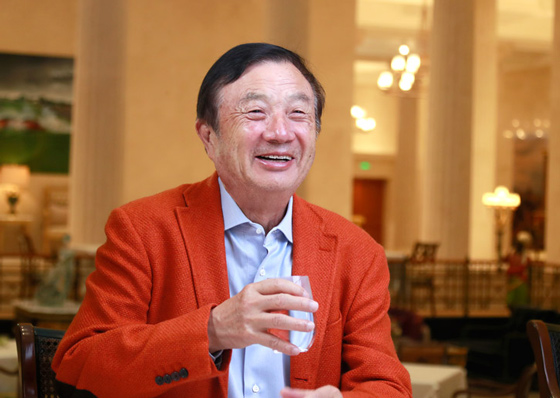
Ren Zhengfei during an interview with the Financial Times
- click to enlarge -
Huawei’s boss takes the field
However, more or less fanciful hypotheses aside, Ren Zhengfei, founder and CEO of the Shanghai-based multinational company (a man considered almost a ghost because of his proverbial reserve), at some point suddenly appeared on the international scene and began to work tirelessly to return to sender the accusations levelled at Huawei. A lawsuit was also filed (and then lost) in a federal court in Texas before district Judge Amos Mazzant. To complicate matters, on December 1, 2018, almost suddenly, the daughter of Huawei's undisputed leader, 47-year-old Meng Wanzhou (CFO of the brand), was arrested on Canadian soil while she was in transit at Vancouver airport, in compliance with an American arrest warrant (with a request for extradition to be executed in accordance with a bilateral treaty) issued by the USA Department of Justice, for reasons related not to 5G, but to the violation of the embargo for telephone supplies to Iran. This event undoubtedly seemed to raise the level of confrontation, causing a diplomatic crisis that even involved the intervention of the Chinese Minister for Foreign Affairs, Wang Yi. The preliminary hearing on the extradition took place before the British Columbia Supreme Court in Vancouver and Judge William Ehrcke initially denied the woman house arrest, which was subsequently granted on bail of 7.5 million dollar, but kept her in detention, monitored by an electronic bracelet, in a house in Vancouver. That is the gist of the recent past.
The Mate range of the 30 series is the first hit by the ban
By chance all this happened just as Huawei was about to launch on the marked the most sophisticated and solid range of all its smartphone series, the "Mate". The ban has in fact forced Huawei to give up the GMS, the Google Mobile Services that allow the smartphone to install the entire galaxy of apps contained in the Google Play Store (Google Map, Gmail and YouTube, for example, but also OS firmware updates and security patches), an asset that for many users represents an indispensable value added whose presence is taken for granted on every smartphone that adopts the Android operating system.
It is wrong to say that the effects of the ban have first intervened on the 40 series, as it is sometimes simplistically stated. In reality, the 30 series has also been hit and right on the head, its most valuable part, consisting of the Mate models (declined in the Mate 30 and Mate 30 Pro models, the first smartphone that does not use any American component of the brand, also offered in the Mate 30 Pro 5G variant) which, as said, have been marketed without GMS, as they use instead the HMS (Huawei Mobile Services) and maybe in the future also the proprietor operating system Harmony. Despite all this, it is interesting to note that millions of Mate 30 units have been sold (mainly in Asia). Whereas it seems almost obvious to underline that the discrimination between the different models of the 30 series has been precisely the presence "in the reference block" of 5G compatibility: all those in the block without 5G compatibility (30 lite, 30 and 30 Pro) have in fact GMS onboard and have not suffered (nor it seems they will suffer in the future) limitations of any kind.
Vitaminization of the "non-Mate 30"
Huawei moved quickly and, taking note of the situation, devised an ingenious exit strategy to avoid being cornered. On the one hand, in fact, it considered that, despite the excellent technical features and the driving power of a well established brand, the Series 40 had to struggle hard to gain a foothold in the extra-eastern world, due to the absence of the galaxy of apps contained in the GMS; on the other hand, it managed to turn a dangerous crisis into a happy opportunity, paradoxically exploiting the most favourable hemi-part of the meaning which in 1959 an excellent American, the never enough mourned John F. Kennedy, attributed (in a way, it seems, a bit approximate) to the two ideograms that in Chinese make up the concept of "crisis": "danger", but above all "opportunity". The permission to use the GMS available for the "non-Mate" models of the 30 series would in fact have given Huawei the opportunity to continue to develop products, evolving a particularly fortunate series, well engineered and, in short, in great demand because of the quality-price ratio, at the cost of not changing too much its original technical substance subjected to certification. So, the idea arose to use to advantage this series by presenting the first “vitaminized” version of P30 lite, brushing up the cheapest and most convenient model of the trio of the penultimate series, and deciding to put on the market the P30 lite New Edition. (Incidentally, the same strategy has also been used for lower end products such as the P Smart, released in 2018, followed by the 2019 version and more recently by the 2020).
The P30 lite New Edition
The new model differs from the old one substantially for the better resolution of the selfie camera (from 24 to 32 Mpix) and for the implementation of the memories, as the system RAM capacity has increased from 4 to 6GB, whereas the data storage ROM capacity has increased from 128 to 256GB. In the first month of marketing (9 January-9 February) a pair of Freelace Bluetooth headsets was also bundled to promote sales at almost list price on the Italian market. This new product is also getting a good commercial response due to the favourable price/performance ratio, however borrowed from its predecessor: this factor, on the other hand, represents exactly the reason why nerds all over the world now tend to grant their preference to mobile phones of Chinese origin, even though in reality in recent times there has been a marked increase in the cost of the top-of-the-range segment by the more established brands.
The new P30 Pro New Edition
The P30 Pro, a model that has become famous in particular for the amazing technical features of the periscope zoom (the first of its kind made available on the market, so powerful that it allows you to photograph the moon freehand), as well as for being the latest mobile phone in the Huawei's premium segment authorized to use GMS, has remained the same for months. Since its release, in fact, in the first half of 2019, the only update it had received was announced in early September, during the oldest international consumer electronics fair held every year in Berlin, the IFA, and was of an exquisitely aesthetic nature: the release of the Mystic Blue and Mystic Lavander color variants.
It is not known how much by mistake or how much by calculation (as it sometimes happens with leaks), however, a short article appeared recently all of a sudden on the Huawei Deutschland website, announcing a promotional period from May 15 to June 4 2020 that would concern precisely the Huawei P30 Pro New Edition model, of which in fact nothing was known until then. This piece of news seems to be a prelude to the commercialization of a further new model, which (as happened already for the P30 lite) would derive from that of the penultimate series, the 30, also subjected to a “vitaminization” process probably based, at least, on the increase of ROM and RAM memory capacity.
Vietata la copia e la distribuzione (anche parziale) senza la previa autorizzazione di AV Raw s.n.c.
Per maggiori informazioni : https://www.avmagazine.it/sito/legale/
Copyright 2005 - 2025 AV Magazine
AV Magazine - registrazione Tribunale di Teramo n. 527 del 22.12.2004
Direttore Responsabile: Emidio Frattaroli
